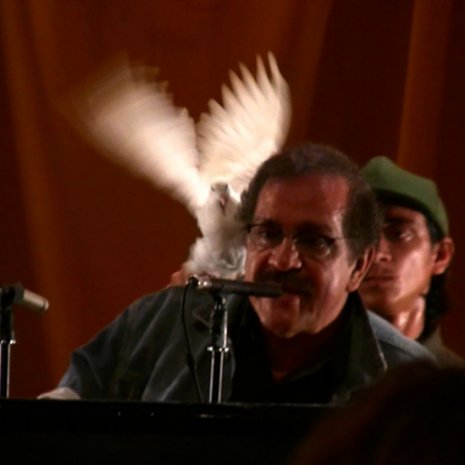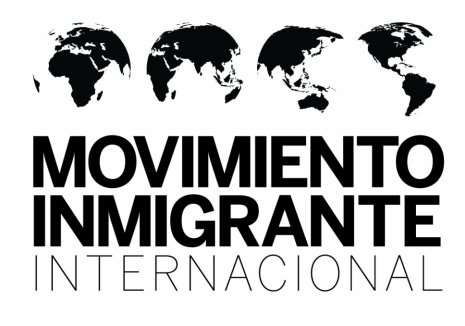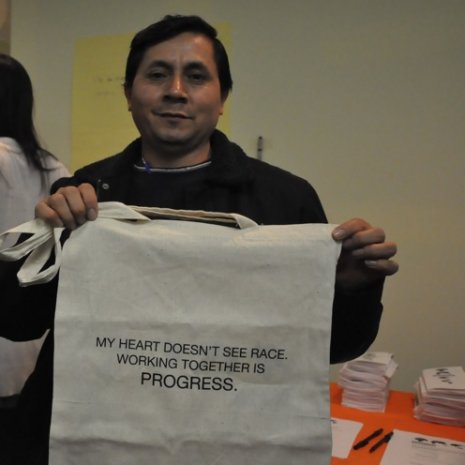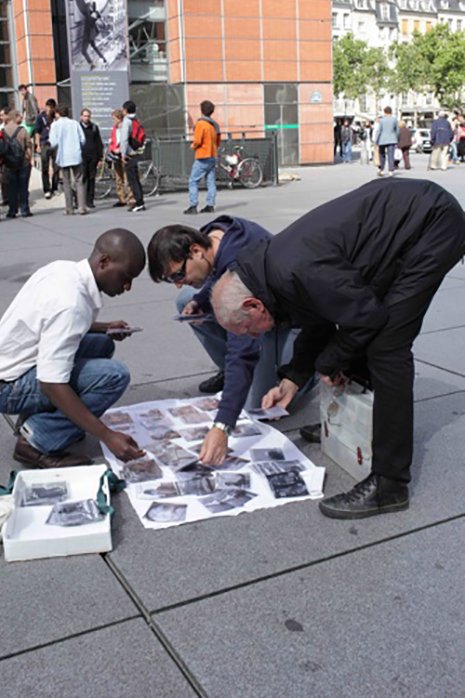In lieu of the “artist’s interview,” we invited a group of artists, critics, art historians, and curators to contribute their thoughts about Bruguera’s work.
Andrea Giunta, art historian, professor of Latin American Art, Buenos Aires University, Buenos Aires
“Artist Tania Bruguera, born in Cuba and educated at the Instituto Superior de Artes, La Habana, brought contemporary performance to radical extremes. Including video and installation, her performances explore issues of power and control. Many of Bruguera’s works are focused on the history of Cuba. In The Burden of Guilt (1998) she performed the decision of indigenous people in Cuba to eat dirt not to be captives of the Spanish conquerors. During 45 minutes Bruguera stood, nude, with a death lamb around her neck, eating soli mixed with water and salt. She also explores the darker sides of other cultures. At Documenta 2002, she presented an installation-performance to make the links of the city with international war industry visible; and in 2008 she presented Tatlin’s Whisper #5 at the Tate Modern in London, as evidence of how mounted police controls multitudes. Probably her most extreme performance was at the 2009 Venice Biennale, when, as in Russian roulette, she pushed the trigger three times pointing at her temple while reading her position on political art. This is an exercise of what the artist calls Behavior Art, centered in artistic commitment and sacrifice. In 2009 Havana Biennale she performed Tatlin’s Whisper #6, giving one minute of free expression on a microphone to whoever wanted it. Cuban government denounced it as an opportunist and anti-cultural event. On December 30th 2014, in order to publically discuss the new situation that emerged after the opening of a dialogue between Cuba and the United States, Bruguera unsuccessfully attempted to re enact this last performance. On January 2nd 2015, she was liberated after three successive detentions. More than 2500 international artists and intellectuals signed a letter requesting for her liberation. At present, her passport is withheld and she is waiting a decision about three criminal charges. Tatlin’s Whisper #6 is being internationally performed in order to demand for her liberation. From initiatives as #yotambienexijo or Immigrant Movement International, Tania Bruguera creates performances that reflect on social responsibility, art ethics and civil society.”
Nato Thompson, Chief Curator, Creative Time, New York
“The artwork of Tania Bruguera has changed radically over the years. These changes are the result of an artist who is always pushing herself to new vulnerable spaces. She believes that art must be brave. She believes in order to make art worth anything, art must have stakes. This kind of bold rhetoric is matched by her ongoing dedication to making such claims resonate; to stand true. She is not only interested in art and life merging, but instead art radically altering the texture of daily existence. As she has said, “I don’t want an art that points at a thing, I want an art that is the thing.” In essence, Tania not only points, but also embodies the very spirit of an art that has stakes.”
Marta Dziewanska, Curator and head of research at the Museum of Modern Art, Warsaw
“Tania Bruguera is an artist who knows exactly what art should be. It should be útil. This very conviction has provoked and continues to provoke a series of crucial shifts: initiator instead of a creator, relation instead of an artwork, actions instead of concepts, collective effort – instead of competition, laboratory – instead of a gallery, and so on. These are not ordinary shifts that are supposed to replace one definition with yet another. They result from the effort of ongoing vigilance and attention so that utility can constantly remain at work.
It is neither a stable nor a comfortable position in any way, but it is the only position that can confront the artist with the challenge that art poses – the challenge of constantly imagining alternatives. For Tania Bruguera it is a practical and a very specific task. Her activity is akin to a seismograph, which – in every moment and context – listens for and reacts to all, even the slightest tremors: those of power/economic abuse, social disparities, unjust laws, discriminations, etc. Bruguera's artistic practice does not merely describe them or aestheticize them (making use), but attempts to capture, unmask and disarm them (real action). This intense activity makes Bruguera's art blur the border between artistic practice and activism, creativity and resistance, utopia and reality. Her art creates a mobile space (again, far from the safe haven of galleries and museums) of authentic dispute: for justice, equality, common space. There is no place for stability here: no objects, no ready-made definitions or predictable situations. Instead, there is constant attention, a continuous effort and the artist's open effort – faced for so many years with utmost perseverance –to be truly useful."
David Joselit, Distinguished Professor, The CUNY Graduate Center, New York
"The medium of Tania Bruguera’s work is trust. Whether this relation is developed in a lecture room, an art school, or a storefront dedicated to using art as a tool for creating an immigrants rights movement. Art is meaningless unless something is on the line. Bruguera not only puts her own body, her time, and her livelihood on the line, but through her durational development of trust, she does the same with her publics. Hers is a rare and brave practice which deserves the name “social sculpture.”
Boris Groys, Professor, New York University
“I first met Tania Bruguera in December 2007 as she invited me to make a seminar at an art school that she organized in Havana. At that time I was deeply impressed by her commitment to the school. She really loved her students, was proud of them, believed into the future of Cuban art and wanted to contribute to it. The atmosphere in the school was really outstanding. And the students were truly engaged. This experience was, of course, not foreign to Tania's work as an artist. She has an almost unique capability to engage her audience - and that is crucial for a performance artist. Her performances are based on a complicated interplay between planned, carefully staged actions and spontaneous reactions of the audience. These performances are always experiments and lessons in communication, in creation a community, but also in playing with the expectations of the audience. The results are often surprising and always stimulating. Beyond any doubt Tania is one of the best performance artists of our time. I hope that it will be also understood in her own country.”
Holly Block, Executive Director, The Bronx Museum of the Arts, New York
“Having met Tania Bruguera in 1994 in Havana, Cuba, while her work was included in the 1994 La Bienal de la Habana, she has created artwork and performance works based on art and politics, often featuring endurance illustrating extreme circumstances. Motivated by politics, her work most recently has combined art, politics and social change examining power structures more directly working in the realm of freedom of expression. Whether creating a performance in public space, working with recent immigrants, Bruguera has drawn worldwide attention provoking not only the viewer, religion, politics as well as the Cuba government. She is so deserving of this award, while her own plight is uncertain, she uses herself as a change agent within art and politics pushing the dimensions of her professional practice as an artist working today.”
Jonah Westerman, Postdoctoral Research Associate, Tate, London
“Tania Bruguera is unique not for the consistent success with which she manages to make politically potent work, but for the fact that she does so by means of a systematic analysis of art’s constitution – how it is made, how it is understood, and how it functions in the world. She sites her work in the ways people react to the situations she constructs; she calls this “Arte de Conducta,” or “Behavior Art.” This means that she harnesses art’s capacity to catalyze the work of interpretation and shows us that this understanding takes place on the blurred edge of aesthetics and politics. What Bruguera contributes to the field’s pursuit of that crucial and difficult interrelation is the notion that politics is not something a work of art can possess, but something it is especially qualified to articulate. When her artworks prove uncomfortable or destabilizing, it is not because she has pronounced something we don’t want to hear, but because she has designed an environment in which some structural facet of our everyday reality can emerge. Her work demonstrates that what we call history lives in the present, inside and all around each of us, and that art can help us to see that it is still unfolding.”
Paul Ramirez Jonas, artist; associate professor at Hunter College
“Tania Bruguera has often said that she does not want to make an art that points at “the thing,” but rather an art that is “the thing.” Immigrant Movement International (IMI) - designed, conceived and implemented by Tania - attempts something quite difficult. It cannot be a true political party in the United States because it is a party of undocumented immigrants and/or legal immigrants. These participants cannot vote and are thus excluded from the traditional source of power. IMI cannot be something like the Green Party. But it seeks to be more than just an artistic gesture. IMI wants to be more than a group of artist that are acting “as if” they were a political party of sorts. IMI exists then in-between two historical precedents: It retains some of the Yippies capacity for aesthetic and symbolic art/activist gestures; and it also exists as a movement with a real constituency. IMI is doing this in Queens; its activities are concretized around a real space, where meetings, workshops, and a number of activities are convened. All these activities allow for a constituency to, borrowing Michael Warner’s words, “know itself by knowing where and when it is assembled in common visibility and common action.”
The work is deeply political, creating visibility for a mostly invisible group of people. It is facilitating connections between immigrants from different countries to come together under common cause, all the while maintaining an artistic identity for the project by forging alliances with art institutions and publics.
Currently the most effective works of political art tend to take temporary and ephemeral forms. The term "socially engaged art" has been used to describe these projects; so has the term "social practice." Like performative works from the 60s and 70s, these contemporary works exist for their primary audiences as something to be experienced in the moment. In the past, some ephemeral works reconstituted themselves as objects and images that re-entered an exhibition based system of circulation. In turn, these discrete objects entered collections, the museums and were thus inscribed in histories of art. However these relics and documentations did a poor job of representing what really took place; they could not replace the experience of a time-based work of art. Other performative works from that period remained ephemeral and survived at an anecdotal level at best or were forgotten at worse. The net effect of either approach is a kind of vague amnesia or continuity of information, where many of these performative works are periodically rediscovered and repeated without pushing the tradition further. In a very real sense each re-emergence of these forms is from scratch. The tradition is stuck in time, and has acquired an increasingly academic flavor. IMI tries to break with this dynamic by attempting to achieve permanence through other means: sustainability. At its core IMI was planned to become an ongoing institution that slowly detaches itself from Bruguera's authorship and transitions to full control and support from the community it serves. This represents real political, conceptual and formal progress. Let’s call this form: art-project-as-political-party.
Certainly, there are many non-profit organizations in NYC that serve immigrant communities. But IMI has tried to do this as an art project. While it is truly a community center for immigrants, its capacity as an artwork also allows it to engage in grand symbolic gestures. In this way, IMI not pointing at a restored public sphere; IMI is a restored public sphere.”


















